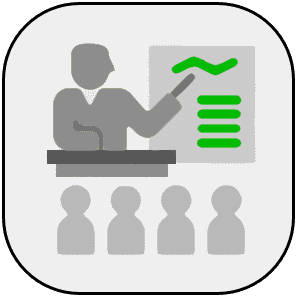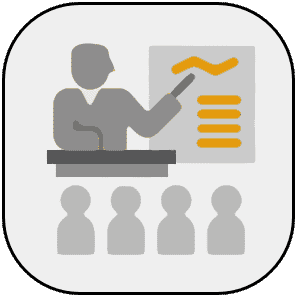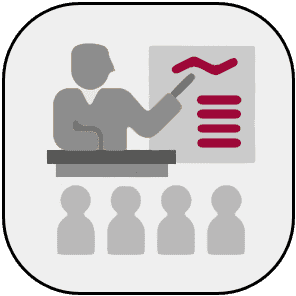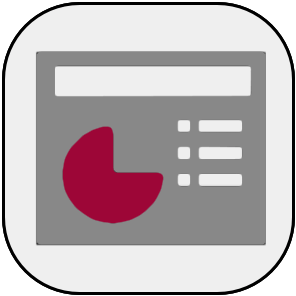What is Business Analytics?

Business Analytics (BA) or "Data Analytics" is the use of data, information technology, statistical analysis, quantitative methods and mathematical or computer-based models to help managers gain improved insight about their business operations and make better, fact-based decisions.
In other words, BA is the process of collating, sorting, and processing business data and using various tools and statistical models to convert this data into business insights. The goal of BA is to find out useful datasets and decide how those can be leveraged to increase productivity, efficiency and thus profitability.
BA involves using big data, data visualization and various statistical models to implement various improvements in the organization.
Business Analytics versus Business Intelligence
What is the difference between business analytics (BA) and business intelligence (BI)?
Both processes involve data as their main component. And both are aimed to improve "decision-making". However the decisions being supported are different:
- BI is used to run the current business smoothly on a strategic/tactical level, like perhaps by what % did our market share increase in market X? Or should we invest in country A or B. While BA is used to create ongoing improvements to certain operational processes of firms, like perhaps optimizing online suggestions to clients for cross selling purposes.
- BI has a strategic focus on making use of available data to take managerial decisions, whereas BA focuses on operational/tactical improvements typically automating them using predicitive analytics.
- BI focuses on the present (what should we do now). BA focuses on future improvements of some process.
- BI is typically used for things like reporting, KPI monitoring, scorecards, performance management. BA is typically used for statistical, quantitive, and predictive analytics.
Having set all this, most people use the terms interchangeably. What matters is what you can achieve with it, not how you call it.
Types of Business Analytics
BA can be broadly divided into 4 different types: descriptive analytics, diagnostic analytics, predictive analytics and prescriptive analytics (in reality the 4 may overlap):
- Descriptive Analytics: Summarizes existing data of a business to get an overview of what happened in the past or what is currently happening. It makes existing data more accessible (by using descriptive statistics) to various members of the company. For example a report with heavy visual statistics.
- Diagnostic Analytics: Moves from the "what" of past and current events to the "how" and "why", focusing on the performance to find the factors which influence trends. It is used to understand the root cause of a problem. For example a business dashboard.
- Predictive Analytics: Involves using forecasting techniques to analyze the probabilities of future events by using various statistical models and machine learning and Artificial Intelligence. Professionals are employed to use machine learning algorithms and statistical model to attain a high level of predicting accuracy. For example a detailed report used to support predictions in sales and marketing.
- Prescriptive Analytics: One step beyond predictive analytics. Involves recommending course of actions to drive the events for the desired results. For example recommendation engines which match consumers with proposed options they might like (e.g., Amazon recommends products you may also like, Netflix recommends movies you may like).
History of Business Analytics
For decades business analysts were only using descriptive analytics to find out mean, median, mode and come to a conclusion. Based on these, the top management devised strategies for developing new solutions. Due to the rise of data science technology, business analytics is causing a major shift in applications. In the past professionals mostly relied on spreadsheets and dashboards to load the data and analyze the information, however today many tools such as R and Python are playing a major role in analyzing the data more effectively. R and Python are particularly helpful in performing predictive analysis by using machine learning algorithms.
Usage of Business Analytics. Applications
BA has applications in many business areas, for example:
- Finance/Investing: Analyzing financial data, analyzing historic stock performance to enable predictions of future performace.
- Marketing: Analyzing customer behavior to increase the success rate of sales as well as customer loyalty.
- Human Resources: Predict the retention rate of employees in various scenarios.
- Manufacturing: Using historic data to take decisions of supply chain management, inventory management, maintenance management, etc. more effectively and more efficiently. For example to decide whether to continue with maintenance of a large machine or to replace it by a new one.
- Online advertizing platforms: Using customer data and behavioral data to show personalized ads.
Steps in Business Analytics. Process
One can classify BA into 7 major steps:
- Define the business needs: Find out what exactly the business is lacking and where a problem is occurring.
- Explore the data: Identify the data that is important for the situation.
- Analyze the data: Investigate the information using statistical methods such as correlation and hypothesis testing, regression.
- Predict what is likely to happen: Use predictive techniques such as decision trees, neural networks and logistics regression. Being proactive in prediction is important.
- Optimize the results: Find the best (optimal) solution which has the lowest number of errors and which suits the situation the best.
- Decide upon the best course: Take a decision and measure the outcomes.
- Update the system: Feed and add the the results of the decision back into the system.
Benefits of Business Analytics. Advantages
- Helps companies make more informed business decisions, making more detailed decisions, and making them faster.
- "Plan for the future" in a way that was not possible before by using predictive analysis.
- Enabled new types of marketing and advertizing campaigns by using data collected from consumers.
- Improves efficiency and profits by making data driven decisions.
- Ability to compare accomplishments against overall goals and objectives. By using data visualization, the past and current performance can be compared more intuitively.
Limitations of Business Analytics. Disadvantages
- Risk of data breaches: If companies are storing and handling sensitive information and a security/handling error is made.
- Low quality data: If there are many errors in the process of data collection or compilation, this may lead to poor results. However, over time this can be improved.
- Inconsistent data: Data collected may not always be consistent. Some data may have some associated variables, while other data may not have those variables.
- Costs: BA software, data scientists and BA experts.
|
Forum about Business Analytics.

|
Software for Mass Data Analysis?
I need to conduct a large amount of data analysis on database. Could anyone recommend an interactive application for data analysis?
The requirements are:
1. Able to cope with the unexpected requirem...
 4  3 comments |
|
|
|
Courses about Business Analytics.

Beginners Course
|

Advanced Course
|

Course for Experts
|
|
|
|
The best, top-rated topics about Business Analytics. Here you will find the most valuable ideas and practical suggestions.
|
|
|
Advanced insights about Business Analytics. Here you will find professional advices by experts.

Consultancy Tips
|

Teaching Tips
|

Practical Implementation Tips
|
|
|
|
|
|
Various sources of information regarding Business Analytics. Here you will find powerpoints, videos, news, etc. to use in your own lectures and workshops.
|
|
|
Useful tools regarding Business Analytics.

News
|

Videos
|

Presentations
|
| |

Books
|

Academic
|

More
|
|
|
|
Compare with:
Business Intelligence |
Analytical CRM |
Regression Analysis |
Dynamic Regression |
Exploratory Factor Analysis
|
|
|


